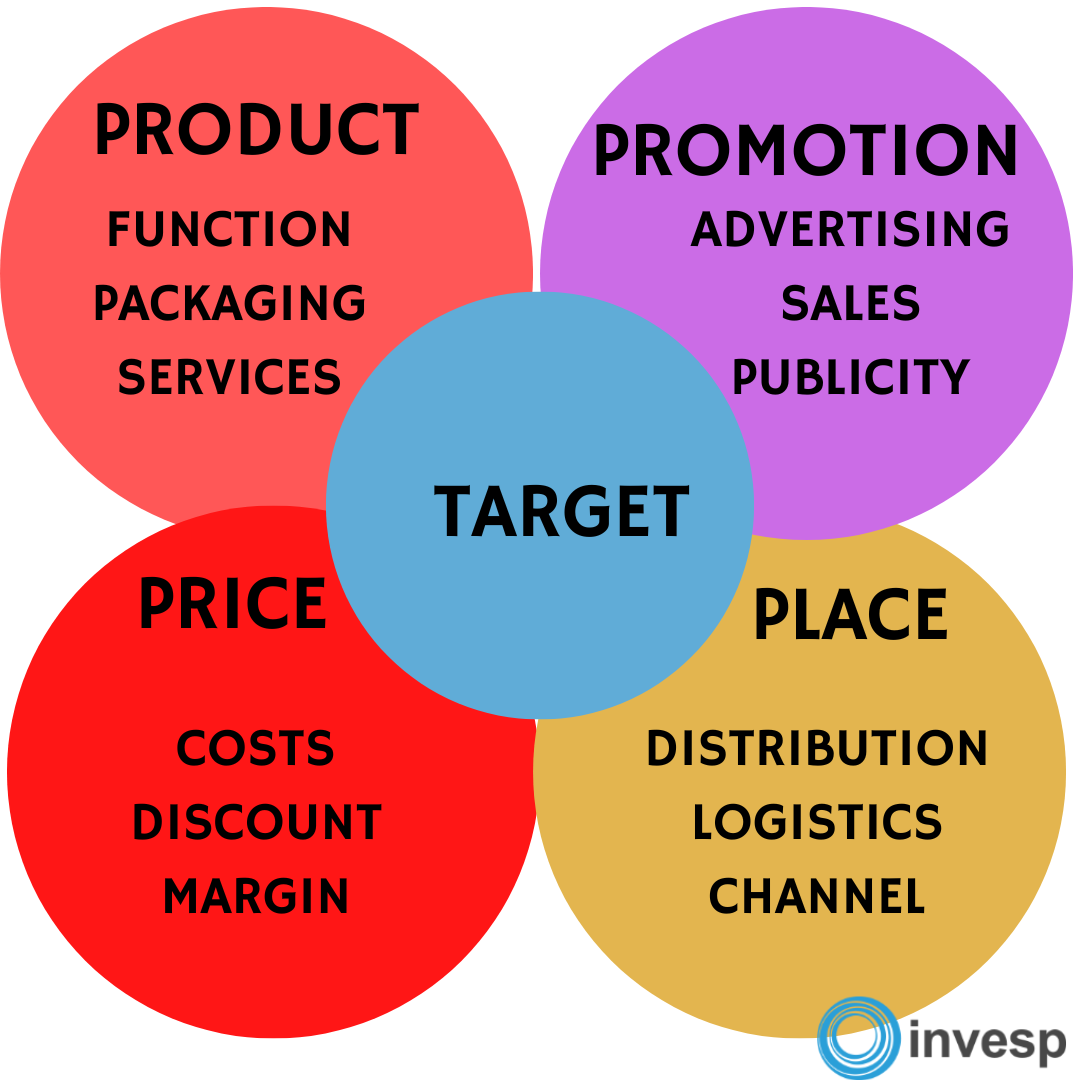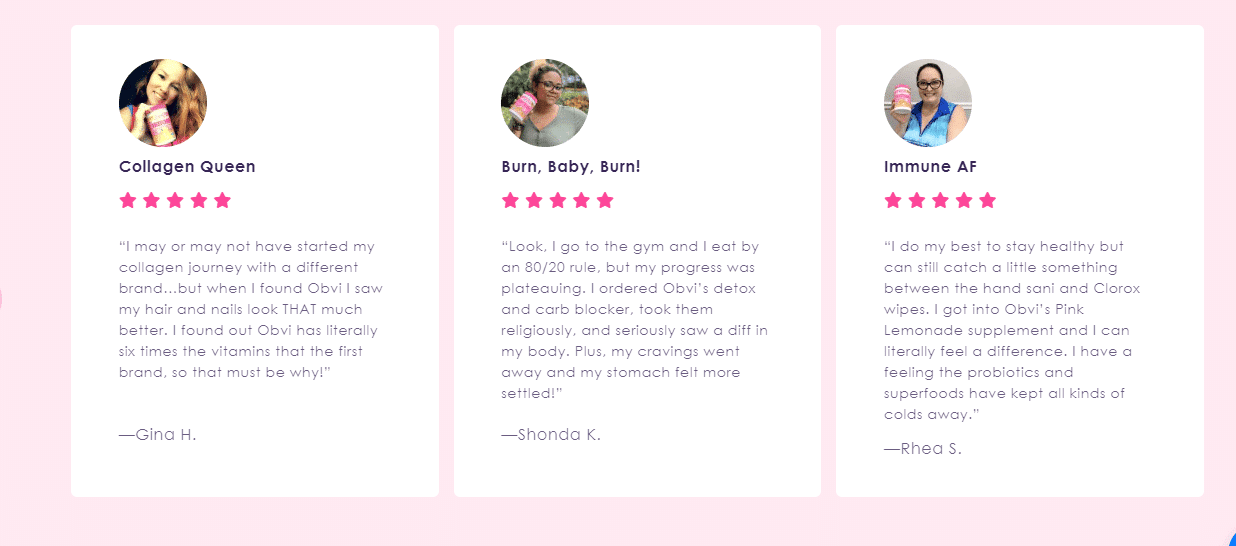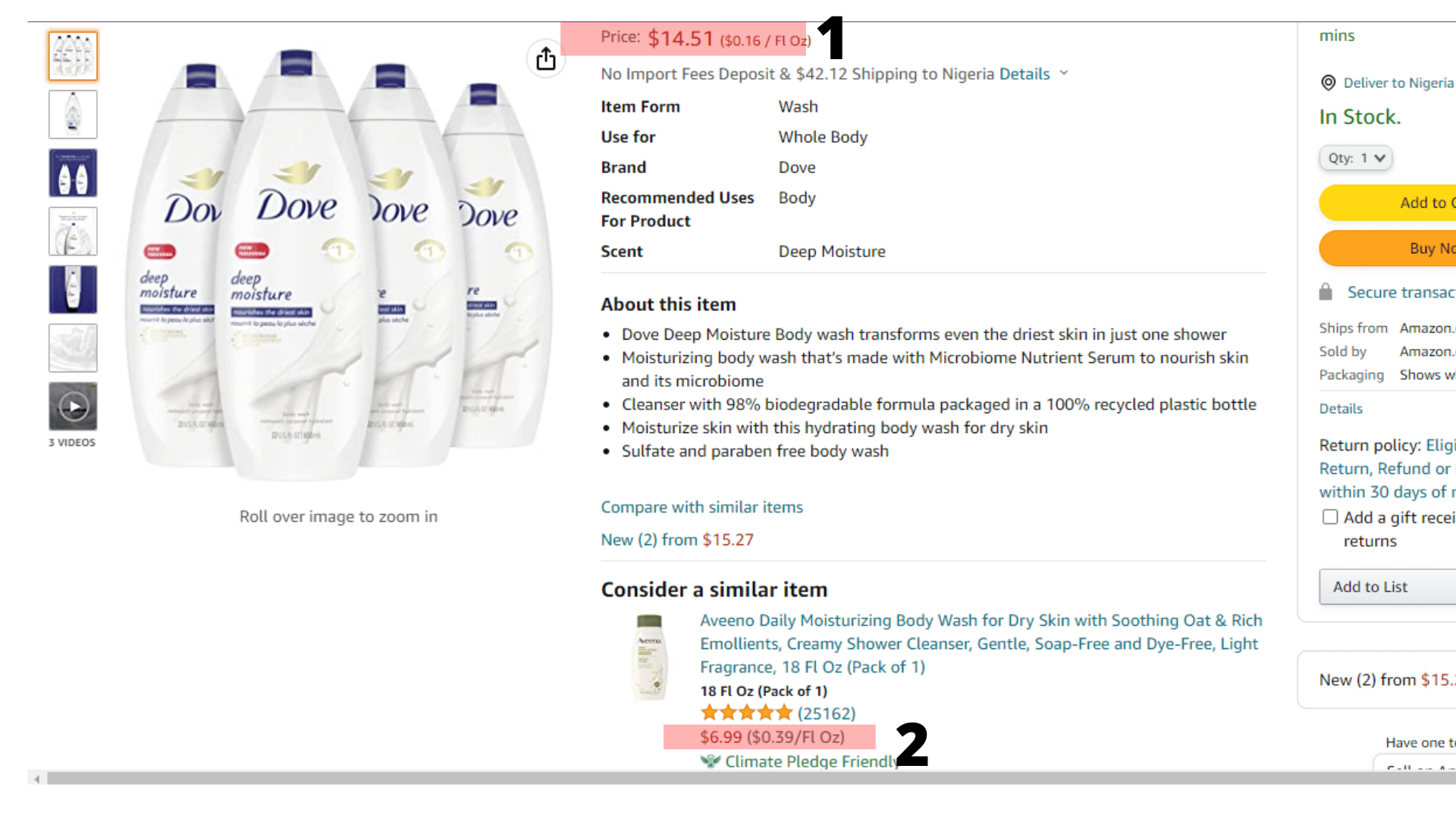Products aren’t sold off the shelves because they’re amazing and revolutionary.
Having an ‘amazing product’ is no longer enough. I ran out of fingers when I counted the number of amazing products expected to sell, like hotcakes, but failed due to poor marketing.
Think of Crystal Pepsi. Or Amazon Fire Phone. Or that Cheetos Lip Balm.
Those products were backed by renowned brands and expected to help increase revenue, but they all failed to impact the consumers’ minds.
That shows that an ‘amazing product’ is a tiny fraction of a big marketing equation.
So, what does the whole equation look like?
Well, this is where we start talking about the 4 Ps of marketing:
Product, price, place, and promotion.
In this article, I’ll be examining the origin of the concept of the 4 Ps of marketing, the 4 Ps of marketing explained, how to use the four Ps of marketing to develop your marketing strategy, the 3 extra Ps, etc.
Ready to dive in?
Let’s get started.
Understanding The 4 Ps of Marketing.
Another term for the 4 Ps of marketing is the word marketing mix. Like other marketing themes and concepts, the 4Ps of marketing have been around for a while.
In 1948, Harvard University Prof. James Culliton published an article entitled, The Management of Marketing Costs, in which Culliton describes marketers as ‘mixers of ingredients.’
Some years later, Cullitons’ colleague Professor Neil Borden published a retrospective article detailing the early history of the marketing mix in which he claims that he was inspired by Culliton’s idea of ‘mixers’ and credits himself with popularising the concept of the ‘marketing mix.
In its modern form, the term 4Ps of marketing was first proposed by E. Jerome McCarthy in the 1960s in the highly influential text Basic Marketing, A Managerial Approach.
The 4Ps of Marketing Explained.
Before selling your product, you need to understand the relationship between the 4Ps of marketing. In isolation, they don’t work best, but together, they make the perfect marketing mix.

1. Product:
The first “P” of the marketing mix is the product. Every marketing campaign begins with having a product or service.
Getting a product that your ideal customer will love to pay for consistently starts with you understanding your customer’s pain points. A good product has to address customer pain points and be a reliable solution.
So, how do you understand customer pain points? Well, this is where research comes into play.
Customer research before developing a product helps to reduce the risk of having a product your ideal audience doesn’t want.
There are four types of research to consider;
1. Quantitative research:
This type of research goes for facts and its objective; an example is asking the question, ‘How much are you willing to pay for a product like this?’ These types of questions could be sent out using a questionnaire and calculated to find the sweet spot for your audience.
2. Qualitative research:
This type of research is detail-driven and subjective, and it’s often based on opinions and not facts. It usually involves open-ended questions that allow the respondent to explain their thoughts. Here, you could conduct jobs-to-be-done interviews, send out open-ended questionnaires, etc.
3. Primary research:
This involves interacting directly with your audience and getting details and facts from them. For instance, setting up a customer survey on your website or sending it via email is a way of conducting primary research with your audience.
4. Secondary research:
The research has been done by someone else, like an organization, and it’s available online. In this instance, you might need to purchase it, or it could be available for free.
You’ll notice that these customer research techniques overlap and are essential in getting valuable insight before developing a product.
Professional tip: something else you can do during the product stage of the 4Ps is to study what’s available on the market so you can see the products your target audience is used to and features they’d like to see, and you develop them in your product.
This helps with product differentiation and a unique selling proposition.
Here’s an example of how myobvi differentiates its collagen products in the supplements niche;
The collagen market is saturated with many products that don’t taste good and don’t live up to the hype.
Obvi saw this, made a move, and they’re known for their great taste and results. See some reviews below.

2. Place:
Place here refers to where your product can be found (bought and sold); this refers to physical and online channels. One critical question you must answer is which distribution channels (online and offline) your prospective customers love to hang out.
Once you figure this out, the place factor in the 4Ps is taken care of.
Here’s an example;
Walmart has an online presence and retail locations (distribution channels), so the makers of cheap toys for kids have an advantage because they can list them online and in retail locations. This makes it very accessible to families wanting the toys online or offline.
Walmart’s online presence;

Retail store finder;

Here’s how Nike crushes it with placement;
Retail Stores;

You can also find Nike online;

P.S: If you miss it here (where your products are placed and seen), you’ll be overrun with low sales, bottoming revenue, and frustration.
3. Price:
Price is the amount your target audience is willing to pay for your product.
This is where many businesses miss it because the prices on products aren’t done considering the target audience but the brand.
In 2013, Burger King introduced a new item to their menu, which was supposed to be a healthier version of its fries.

They called it Statisfries, which absorbed less batter when frying and was a healthier option.
They failed to convey the information that though it was healthier, it was also more expensive than regular french fries.
It didn’t gain traction with its target market and was discontinued in 2014.
This further shows the importance of running pricing tests and letting your target audience know how much you’re selling your product.
Note: Much more than how much an item is sold, there’s the perception element pricing gives to your product.
In most cases, if you price your product low, your target market could view it as cheap and low quality. It could be considered pricey or luxury if you price it higher than the competition.
The trick with pricing is this, don’t just slap an amount on your product; it’s good to research the competition and see how they price their product, but more than that, run pricing A/B tests and see how your ideal customer reacts to it.
This way, you’ll arrive at a better amount that helps with revenue and is a good fit for your target market.
Note: many eCommerce businesses consistently offer discounts to drive product sales. As a sales strategy, this is bad for revenue and profit margins.
Offering discounts to first-time buyers to get that sale and have them experience your product is good, but the question remains, when do you draw the line and sell your product at full price?
This is answered in our article that goes into depth on how to stay on brand with discounts and promotions.
Here’s how Amazon runs a pricing experiment by comparing similar products for site visitors;

One refers to the product’s original price the user searches for, highlighted in red.
Two refers to a different item that does the same thing, which is also highlighted in red.
4. Promotion:
Promotion means marketing, the final piece that ties up the marketing mix.
You might have a fantastic product, list it in the best place (online and offline), and have a reasonable price point, but if your target audience doesn’t know about it, you’re going to make little to no sales.
While planning promotions, you’ve got to factor in where your ideal customer hangs out. There’s no need to run Tiktok ads because it’s the whole rave this moment while your customers hang out on Twitter.
That’s a waste of your advertising budget.
Just like with every piece of the marketing mix, a lot of thought precedes action here.
Also, promotion can be online, same as offline.
Here are common channels you can use to promote your products to your ideal audience;
- Magazine
- Direct mail
- Influencer marketing
- Content marketing
- Email marketing
See this example from Adidas, running a PPC campaign;

Here’s another example of the brand JustPaddles promoting their product to their email list on the 4th of July;

The next section deals with bringing everything together and developing your marketing strategy.
How To Use The 4 Ps of Marketing In Your Marketing Strategy
Take your time and study every successful marketing strategy and campaign you know of, and you’ll notice that they are rooted in the marketing mix at their core.
Suppose you want to do the same for your business; here’s how you can have the 4Ps of marketing as the backbone of your strategy.
The first thing you need to do is think through your product. Generally, successful products fill a need in the target audience’s life or provide a novel experience. You need to identify what your product does.
After identifying that your product is customer-fit (fills an obvious need or provides a novel experience), the next factor to look at in the marketing mix is the price of your product. Pricing can make or break your product.
What you’re considering here is not the amount of the product but the perception your ideal audience has when they look at your product. Does it scream luxury, or do they think it’s cheap and low-quality because the price is cheaper?
To win here, you’ll need to run polls and surveys to get feedback on price perception.
You’ve come this far in getting a fantastic product and good price perception; placement is the next factor in the marketing mix to consider.
Placement refers to identifying where your ideal customer likes to hang out and shop for similar products.
Placement is not just online; it could be offline as well.
The last factor in the marketing mix is promotion. Promotion is how you get the word out to your ideal customer that you’ve got the product that takes care of their wants and needs.
Promotion is not just about buying media (Facebook ads or PPC). In a broader perspective, it covers getting the right message to the right audience using paid media.
This is because it’s possible to get your message wrong and your audience wrong, and that messes everything up.
People, Process, and Physical Evidence: the extended marketing mix.
Since the 4Ps were popular in the 1960s, other Ps have been introduced to strengthen and improve the marketing mix.
People:
This refers to the people in your business who act as your product’s face. They represent your product to your customers and prospective customers. For many companies, this will be the customer service department and sales, but it’s much more.
Looking at the current marketing trends, people here include influencers for your products, brand ambassadors, etc.
Process:
This refers to logistics. A significant advantage for any eCommerce company is to have fast logistics and processes that allow them to deliver products to customers on time.
This is good for businesses because it allows them to build loyalty and stay top of mind amongst their customers.
This is where a business like Amazon thrives. They’ve got fantastic turnover time for delivering products.

Physical evidence:
This covers where the product/service is being delivered from (website and offline inclusive). As a business, on your website, you want your ‘About section’ to have details about your executives, key employees, your physical location, and other information that inspires trust.
Offline, if your business has retail stores, you want to ensure your physical environment is clean and refreshing. Your physical environment is the same perception walk-in customers will have of your business.
This is critical because site visitors make decisions to buy from you or not based on what they can see.
How To Measure The Success Of The Marketing Mix
To measure these elements’ success, companies use various metrics and methods. Here’s a brief overview of how to measure each of the 4Ps:

1. Product:
To measure the success of a product, companies can look at metrics such as unit sales, market share, customer satisfaction, and product returns. Additionally, companies can conduct surveys or focus groups to gather feedback from customers and gain insights into how well the product is performing.
2. Price:
To measure the success of a pricing strategy, companies can look at metrics such as revenue, profit margins, and market share. They can also compare their prices to those of competitors to see how they’re positioned in the market.
3. Promotion:
To measure the success of a promotion, companies can look at metrics such as response rates, sales lift, and return on investment (ROI). They can also track changes in brand awareness, customer perceptions, and purchase behavior to see how well the promotion has performed.
4. Place:
To measure the success of a distribution strategy, companies can look at metrics such as sales by channel, distribution coverage, and inventory levels. They can also track the speed and efficiency of delivery and the satisfaction of customers with the distribution process.
It’s important to note that the success of the 4Ps can be interrelated and that changes in one area can impact other areas. For example, a change in price may impact sales, which in turn could impact promotion and distribution strategies. Companies need to regularly assess and adjust their marketing mix to ensure that their 4Ps are aligned and working together effectively to achieve their marketing goals.
Final Thoughts On The 4 Ps Of Marketing
Marketing has evolved over the years since the marketing mix concept became popular.
There has been the addition of 3 extra Ps, and as the industry progresses, there will be more additions.
Whether you’ve been in business for decades or just starting, having a great product is good, but that’s not all there is to make sales. Finding the right price, knowing where your ideal audience hangs out, and creating a promotion strategy are essential to seeing a lot of sales.
FAQs: The 4Ps of Marketing – Marketing Mix Explained
What are the 4 Ps of Marketing?
The 4 Ps of Marketing, also known as the marketing mix, refer to product, price, place, and promotion. These elements collectively form the foundation of a marketing strategy.
What are the 4Ps of Marketing Mix?
The 4Ps of Marketing Mix include Product (the offering), Price (the cost), Place (the distribution), and Promotion (the communication strategy). These aspects work together to create a holistic marketing plan.
Why are the 4Ps of Marketing important?
The 4Ps are crucial as they provide a structured framework for developing and executing marketing strategies. They help businesses align their offerings with market needs, optimize pricing, enhance distribution, and promote effectively.
What is another name for the 4Ps of Marketing?
The 4Ps of Marketing are also commonly referred to as the Marketing Mix. This term reflects the combination of elements that businesses manipulate to achieve their marketing objectives.
How do the 4Ps of Marketing interact with each other?
The 4Ps interact synergistically; changes in one element can affect the others. Understanding these dynamics is key to crafting a well-balanced marketing strategy.
Can the 4Ps be applied to any industry or business size?
Yes, the 4Ps are versatile and can be adapted to suit various industries and businesses, providing a universally applicable framework for marketing planning.
Are the 4Ps of Marketing relevant in the digital age?
Absolutely. While the channels and tactics may evolve, the core principles of the 4Ps remain relevant, adapting to the dynamic landscape of modern marketing.
How can businesses use the 4Ps to gain a competitive edge?
Businesses can leverage the 4Ps to differentiate themselves by carefully tailoring product offerings, pricing strategies, distribution channels, and promotional activities to meet specific market demands.
Additional Resources
1. Top Sales Funnel Software and Sales Funnel Builders For Marketers In 2023
2. The Importance Of Customer Lifetime Value In eCommerce
3. Value Proposition: What It is, How It Works, and Why You Should Pay Attention To It

